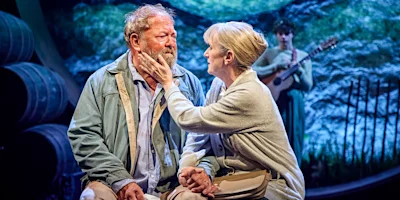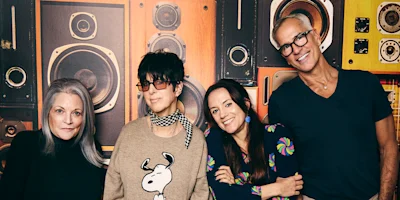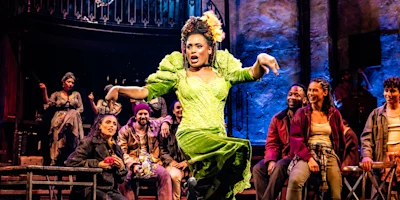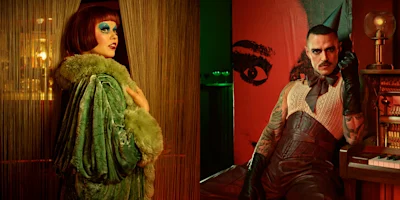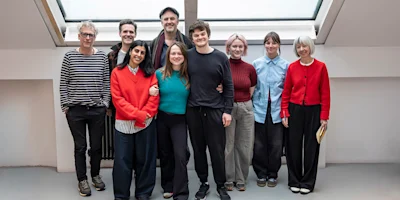
Go behind the scenes of ‘The Lion King’ at the Lyceum Theatre in London
Discover what it means to put The Lion King on stage in London with our behind the scenes look.
The West End circle of life is incomplete without The Lion King, and the Disney musical shows no sign of slowing down. There is something uniquely special about The Lion King that has helped it become the highest-earning piece of entertainment ever. But have you ever wondered what it’s like to be a part of The Lion King in London? Discover what it means to put The Lion King on stage with our behind the scenes look.
Book The Lion King tickets on London Theatre.
What is The Lion King?
The Lion King musical originally opened on Broadway in 1997, and is based on the 1994 Disney movie of the same name. The Lion King follows Simba, a young lion cub who eventually becomes King of the Pride Lands after an epic journey across the Serengeti. The Lion King first mystified audiences and critics, barnstorming the 1998 Tony Awards where it took home the coveted trophy for best new musical. A similar effect occurred in London in 1999 when the first international production was mounted – and the rest as they say, is history.
From the iconic marketing image with a roaring Simba to the popular score with songs including “Can You Feel the Love Tonight? and “Hakuna Matata”, The Lion King has kept the West End alive for new generations to enjoy. But the Disney creativity and magic is down to director and designer Julie Taymor, who ensures that The Lion King continues to stand up as a blueprint for ingenuity and innovation.
What is it like to walk backstage at The Lion King?
Walking backstage at the Lyceum Theatre, the first thing that strikes you is the amount of space, or lack of, behind the scenes. Despite an expansive stage, the wings and backstage areas of the Lyceum Theatre are exceptionally tight, meaning the set, props and costumes are tightly packed in every available centimetre of space. The meticulous management of a team of over 150 people make the show run like complete clockwork.

The deputy stage manager ‘calls’ the show from their respective areas on the larger stage left side, above a huge automation department who are responsible for controlling the revolving Pride Rock, the hydraulic lifts and tons of automated scenery that are used throughout each show. When all of the set is stored, you’re left with a huge empty stage decorated with beautiful markings, representing cat claws that lions use to mark their territory. You gradually begin to realise the intense level of detail that has gone into creating the world of the production.
Immediately following a performance of The Lion King, the stage crew descend to reset for the next show. For some, that means packing up the animals who come from outside the theatre and through the auditorium in that iconic opening scene and pre-setting them out of sight for the next unsuspecting audience. Meanwhile, the mask, costume and wigs department are ready to dive underneath the stage to the ‘Bunker’, in order to take stock of every inch of fabric, bead or headdress used within the show and touch it up and prepare for the next performance.
What are the costumes like at The Lion King?
Seeing the stock in full display, you can’t help but marvel at the differences in texture, style and colour between each costume. Holding one of the Lioness headmasks, you appreciate how light the material is in order for the actor to deliver the choreography and look facile at the same time. Compared to the weight of the grass-skirts worn by the ensemble in one of the early scenes, you develop a full appreciation for the strength and physical fitness it takes to be a part of this energetic and full-on show.
What are the puppets like at The Lion King?
There’s also a lot of puppets used in The Lion King. In total, there are 232 puppets – the smallest being the mouse that’s eaten by Scar, to the largest, which is the Majestic elephant that walks through the aisle and onto the stage. Each of these puppets has been hand crafted and is maintained on a daily basis to ensure the same level of perfection is achieved in each performance, and in multiple cities all over the world.

Julie Taymor’s puppets and costumes on the other hand use what has been called the ‘double effect’ method. Rather than hide the actor wearing the costume, the actor’s body is used alongside the puppet to create two distinct areas of focus for the audience. Some audience members focus primarily on the puppet and ignore the actor. Others focus more on the actor and the emotions they convey. It’s down to audience members themselves to decide how they interpret the show. But the beauty of this method is that it becomes possible to focus on both – therefore creating the ‘double effect’ which helps the show come to life.

One of the best examples of this specific method comes in the form of two very different animals. The elegant cheetah that is seen stalking its prey blends the grace and beauty of the actress, with the power in its back legs, which are attached to the puppet to simulate and replicate the same motions. The head of the cheetah puppet, which remains expressionless, is attached to and is controlled by the side of the actresses head, thus blending both actress and puppet into one visual. Animals like the zebra who are more fun and playful enjoy a lighter material that is realised by attaching to the shoulders of the actor to provide a necessary ‘bounce’ that helps their character be represented by both puppet and human.
What is the auditorium like at The Lion King?
The Lyceum Theatre auditorium is beautiful too. As audiences enter the auditorium, you’re immediately struck by the level of detail that has gone into the production before the curtain even goes up. The interior is painted a specific shade of burnt orange, a colour that’s repeated throughout the proscenium arch, show cloth and design, binding together different elements of the whole production. The colour evokes an early morning sunrise – which coincides with the first scene of the musical as Rafiki summons the animals to the presentation of baby Simba, against an impressive on-stage sunrise.
Frequently asked questions
What is The Lion King about?
Set against the majesty of the Serengeti Plains and to the evocative rhythms of Africa, Disney's multi-award winning musical will redefine your expectations of theatre.
At its heart is the powerful and moving story of Simba - the epic adventure of his journey from wide-eyed cub to his destined role as King of the Pridelands.
Brilliantly reimagined by acclaimed director Julie Taymor, Disney's beloved film has been transformed into a spectacular theatrical experience that explodes with glorious colours, stunning effects and enchanting music.
An iconic, innovative musical that will still take your breath away. This global hit is the most successful stage show in history. Using vibrant puppetry to bring to life the classic Disney film, Julie Taymor’s production was groundbreaking when it debuted and continues to be unlike anything else on the West End. Let yourself be transported, grab your tickets to The Lion King at the Lyceum Theatre today.
How long is The Lion King ?
The running time of The Lion King is 2hr 30min. Incl. 1 interval.
Where is The Lion King playing?
The Lion King is playing at Lyceum Theatre. The theatre is located at 21 Wellington Street, London, WC2E 7RQ.
What's the age requirement for The Lion King ?
The recommended age for The Lion King is Ages 6+. Children under 3 are not permitted to enter the theatre. Anyone under 16 must be accompanied by an adult and may not sit on their own. All persons entering the theatre, regardless of age, must have a ticket..
How do you book tickets for The Lion King ?
Book tickets for The Lion King on London Theatre.
What are the songs in The Lion King?
The Lion King features the classic tunes from the movie with new songs written specifically for the stage adaptation. New songs, such as “Endless Night”, are intertwined with well-known songs like “The Circle of Life” and “Hakuna Matata.” Read our complete song guide to The Lion King.
Who wrote The Lion King?
The music was composed by Elton John, with lyrics by Tim Rice. Roger Allers and Irene Mecchi wrote the book for The Lion King stage musical.
Who directed The Lion King?
The Lion King on stage was directed by Julie Taymor. At the Tony Awards 1998, she won Best Direction of a Musical.
When did The Lion King open in the West End?
The Lion King opened at the Lyceum Theatre in the West End on 19 October 1999.
Is The Lion King appropriate for kids?
The Lion King is suitable for all audiences but is recommended for ages 6. Children under three will not be admitted.
Is The Lion King good?
The Lion King is a spectacular production that is an excellent time for the whole family. Read our five-star review of The Lion King.
Originally published on


